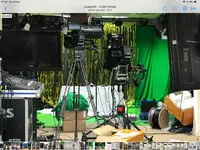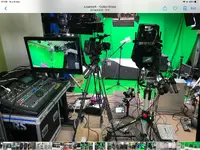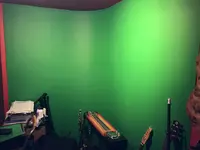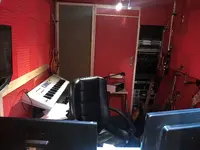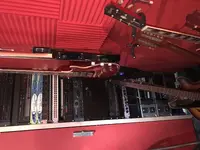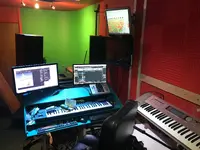Let me just say that im tired of watching the industry pros lie to up and comers just to take their money, and then give them a promise that cant possibly be achoeved even by an old pro like me. I started engineering on my first record deal in 1990. I cut my teeth at Westlake, Musical Animal, Trax, etc on mostly rap groups like Public Enemy, The College Boys, Biz Markie, and Little Easy E and his crew,..I met him before he died. God rest his very kind soul. After 30 years and many records, I have watched what was once an unknown skill become a multi-mullion dollar income for guys like Chris lord Al, Bob Clearmountain, etc, and most of it is well deserved. These guys make your songs radio ready. But when i speak to interns at my recording studio who are spending thousands on Masterclasses on the net and plug-ins that promise to deliver the "low end" of Chris lord alge (who by the way wouldnt know shit if it wasnt for the very kind man of bob clearmountain who taught him for free), then they tell me what was said...it pisses me off. I did a little research and got even more upset. I dont care about money, and what Chris LA can do for your song is worth every dollar he gets paid and beyond. However, getting paid for promises that cant possibly be delivered by the information your giving for the money is thievery. " Just ghets this plugin" they are told and you bass will thump. Just do this and thats All! Lies. No names mentioned, because it isnt all of them, and the right to keep your secrets as a trade is every mans right. But when very kind men (like bob clearmountain) are handing out knowledge to interns out of the kindness of their heart, and then that future pro charges for it isnt wrong in itself. We all have to eat and create a business. Where the wrong is done is is when the paid pro is saying" I just use a 1176 plugin on my bass at 4:1 fast attack and release with about 3 db reduction on parallel and thats it...get my plug-in" and they are lying...same thing as holding a gun up and robbing.I know some people are going to be pissed, but since im not selling a product, you can beliueve me. The next time your lied to, email me and Ill tell you how to get what youre looking for. The nerve of someone to do that so money can be made, and secrets are kept in selfish gain (especially when ost of them learned from a kind pro while they were making 5 dollars an hour as an intern) just makes me burn. So here are a couple quick hints next time a salesman is trying to dig into your pocket without giving you any of the air they breathe. The picture of a salesmans studio has a computer and a Pro tools screen (i call it pro-stools because the degradation to any sound wave when recorded is so bad it shocks me anyone uses it-try Reaper or Logic. The A/D converters are far superior. Hell, try audacity before you Pro-Stool up your music). Although, the picture of their studio is not what they are using. You see, Killers mixers have a sound- like the Neve 80 series i cut my teeth on, and the API counsel..the one with the double master pot, and that sound is a large part of what youre final product sounds like. Its not that you cant mix without on and get a hit...you can easily, but when the absolute hugeness of an instrument mixed through a Neve counsel with killer outgear hits your face, you realize quickly that the onboard compression of a 33609 on a bass channel paralleled to a blackface 1176 and a pultec on bus will destroy any sound you can get on protools with a waves plugin, period! A Telefunkin elam through a 1073 (screw it, a focusrite Red 8 is unreal) with the eQ engaged just to roll everything off below 50 cycles and give it the color straight from God and a 1176 silver face just to grab the peaks(or an LA 2A-but be prepared to loose some highs, although with the presence bump at 15k of the Elam, you never really had to worry about it) , never will you again believe the promises of these charlatans who tell you "just take my class or buy my plugin and youll sound like me" again. They dont mention that theyre using hardware, not software, using boards with a sound, not computer screens with a one dimensional depth. Yes they all edit and use computers, but (no name mentioned) when a detroit artist is stopping by to record, and send a group he signed to also record, at my studio because i have 2 inch tape, yet the credits on the record say digitally recorded and mastered, thats when all you new puppies out there can understand why you get so damn frustrated when your hip hop track sounds like it was recorded with toy sounds from a 50 dollar plastic casio keyboard instead of like a Tupac joint. And thats ok if your an artist keeping secrets...but not when your a salesman all over the net, getting rich, yet refusing to tell the truth. What happened to this business? Why cant they just say " sorry kid...i told the truth when i said digitally recorded and mastered, but what i didnt tell you was i hit tape first, then dumped it to my computer so i would have the low end shift on me when mixing like tape tends to do, and i used all hardware pres and outgear on the intake, not plug-ins, used my neve counsel for the 1081's and an extra stage of gain so i could have the control I wanted when gain staging, and also for the enormous fat colored huge professional sound it gives to my instruments when tracking, mixed it with all hardware outgear, not a single cheap plugin, because there is no way you can touch my pultecs and API eqs, My huge rack of vintage Urie comps, my Variable-Mu on the drum buss and my Shadow Hills on the master bus,... and oh yeah, I also had Bob Ludwig master it so i could run it half analog, or all analog--ok, now do you want to buy my master class or my 40 dollar waves plug-in so "your tracks will slam just like____?". Yes, im going overboard, but it really hurts me that this is going on. These kids come in my studio, and many of them are spending money they dot have because they actually believe this class of plugin will make the promises come to life! Look , Im not saying these arent good things, they are. I prefer UAD, but i love a ton of my waves plug-ins. They do deliver and keep their promises...its many of the guys turning the knobs that dont. I watched an interview (no name) by one of these pros after my intern told me he payed for a class to learn a specific thing...everything he was told was a half truth, and the interview was laughable. " I just do this -explanation- and thats why i get $10,000 a song from the majors...everything he said was true..except he told you the beginning and then conveniently left out the next 75% of how he gets his guitar sound. An example of of how much is actually left out can simply be stated like this. If im mixing a release and it happens to be a rock cut with heavy guitars--count on seeing me break a power rhythm guitar into three separate tracks just for the EQ..yep..just so i have the control i want on the lows, mids, and highs of that particular instrument, and thats just EQ. Never will you be told this. If ive got a rock song that is basically 4 instruments and thats it, Ill carry my low end by having two bass tracks panned 9 and 3 with inter-playing comps attack and release, Fast/slow left, Slow/fast right kinda thing. This is just a very small example so that you can envision how bad the lies are. Ok, so im donme, and im sure the backlash will be horrifying, but i dont care. To all you pros making promises for money you know cant be kept, my email will be wide open to any newbie who wants to know how to do something...and ill give it like i got it...for free


